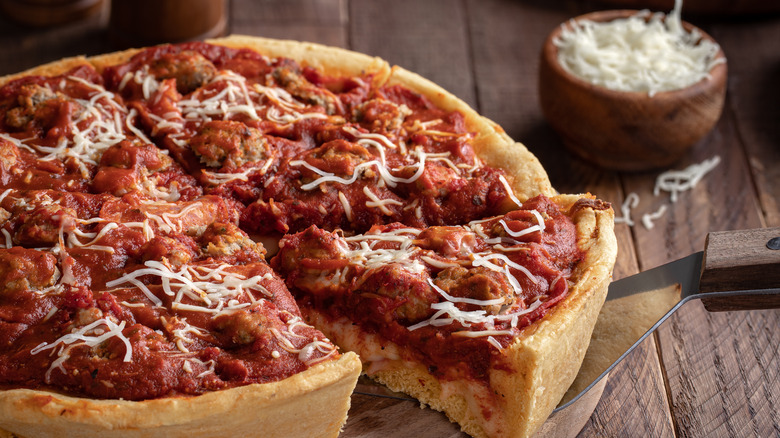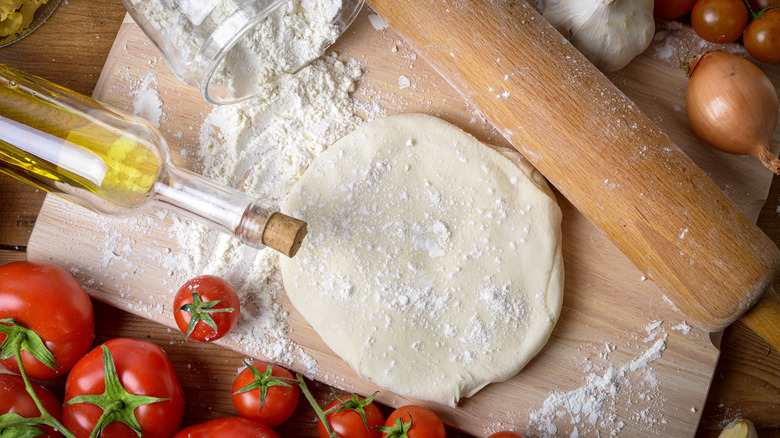When Making Deep Dish Pizza, Using Extra Oil Is Key
The crowning glory of a classic deep dish pizza is its characteristic high-rise golden crust. If you're making one at home, using extra oil to grease your pie pan is the key to guaranteeing you achieve a solid base with crispy sides and a fluffy middle.
The extra oil does two vital things. Firstly, it creates a super-strong, crispy crust that makes a sturdy cradle for the large quantity of gooey cheese and herby sauce that will be layered up inside the pie. The oil conducts heat into the yeasted pizza dough to help it color and crisp up as it bakes, lending it heaps of structural integrity and a sound foundation. Now, the crust of a deep dish pizza needs to be robust because it contains a lot more filling than a traditional Neapolitan-style pie that's thinner and has chewy air pockets. If it's floppy when it comes out of the oven, the filling will seep into the crust, making it soggy and ill-equipped to hold the weight of the cheese and sauce.
Secondly, the oil adds lots of flavor to deep dish pizza with little extra work. It gives the crust a buttery, fried taste and helps it to develop a golden color on the surface that looks über-appetizing. Paired with the creaminess of the cheese and the sweetness of the tomato sauce, this crispy crust sensation tastes out of this world.
Use 3 times more oil than you normally would
To make the perfect crispy crust you'll need to add 3 to 4 tablespoons of oil to your extra large pie dish so the base is fully covered. Of course, if you're making a smaller-sized pizza you'll need to adjust this amount — a good rule of thumb is to add about 3 times more oil than you'd normally use when cooking. This extremely generous glug of oil may look like overkill once it's in the pan but it's essential to achieving a wonderfully strong crust that's robust enough to hold a hefty layer of fillings.
Tilt the pan to distribute the oil evenly over the surface, taking care to take some of it up the perimeter so the outer ridge of your pizza pie can also develop some color as it bakes. As you press the risen dough into the pan, you may find that some of the oil escapes and drips over the sides. Simply give the exterior of the pan a quick wipe before placing it in the oven to eliminate any burnt odors. As always with deep dish pizza, the cheese goes first, followed by veggies and meat. Top the entire thing with a substantial layer of tomato sauce and your pizza pie is ready to be baked.

